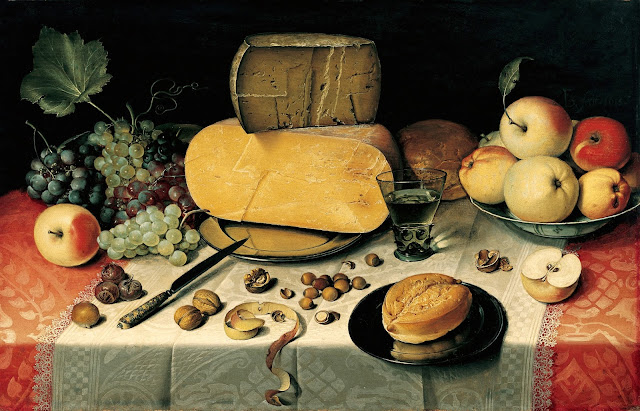Italy was one of the leaders of the 16th century and 17th century cultural revolution, and that included table manners. Italian poet Giovanni della Casa advised in “Galateo,” his 1558 book on manners: “One should not comb his hair nor wash his hands in public... The exception to this is the washing of the hands when done before sitting down to dinner, for then it should be done in full sight of others, even if you do not need to wash them at all, so that whoever dips into the same bowl as you will be certain of your cleanliness.”
Taking into account that one's hands were also one’s “utensils” for hundreds of years, this advice was truly of utmost importance. In his study on the social customs of this period, sociologist Norbert Elias noted that “In good society one does not put both hands into the dish. It is most refined to use only three fingers of the hand. ... Forks scarcely exist, or at most for taking meat from the dish.”
Some of the earliest known uses of forks with food occurred in Ancient Egypt, where large forks were used as cooking utensils. The personal table fork was most likely invented in the Eastern Roman or Byzantine Empire, where they were in common use by the 4th century, though the origins may even go back to Ancient Greece, before the Roman period. By the 9th century, according to records, a similar utensil known as a barjyn was in limited use in Persia within some elite circles. By the 10th century, the table fork was in common use throughout the Middle East. Forks were originally viewed by most in Western Europe, as excessively refined. Forks were also viewed, in the case of men, as a sign of effeminacy.
The custom of Western Europeans using table forks as dining implements began in Italy. They were at first a hit, but forks were slow to catch on in Northern Europe. The use of forks to get food from plate to mouth, didn't gain wide acceptance in Northern Europe until the 17th century—and even then, only the well-to-do could afford them.
Some human behaviors were deemed permissible at the dinner table. On passing gas, Erasmus wrote, “If it is possible to withdraw, it should be done alone. But if not, in accordance with the ancient proverb, let a cough hide the sound.” Most modern etiquette books advise that “civilized folk will protect others from any sounds or smells that may be displeasing.”
This isn't to say that all Renaissance manners are indeed outdated. On respecting fellow diners’ personal space, Giovanni Della Casa wrote, “It is also an unsuitable habit to put one's nose over someone else's glass of wine or food to smell it.” And Erasmus advised, “It is rude to offer someone what you have half eaten yourself; it is boorish to redip half-eaten bread into the soup.”
Even modern science shows that a great means of spreading bacteria, is re-dipping partially-eaten foods. It certainly gives you an idea of what Renaissance society was trying to improve upon—and how far we've come since that time period. –Some of our sources; Smithsonian.com, 2011 and leitesculinaria.com
Some human behaviors were deemed permissible at the dinner table. On passing gas, Erasmus wrote, “If it is possible to withdraw, it should be done alone. But if not, in accordance with the ancient proverb, let a cough hide the sound.” Most modern etiquette books advise that “civilized folk will protect others from any sounds or smells that may be displeasing.”
This isn't to say that all Renaissance manners are indeed outdated. On respecting fellow diners’ personal space, Giovanni Della Casa wrote, “It is also an unsuitable habit to put one's nose over someone else's glass of wine or food to smell it.” And Erasmus advised, “It is rude to offer someone what you have half eaten yourself; it is boorish to redip half-eaten bread into the soup.”
Even modern science shows that a great means of spreading bacteria, is re-dipping partially-eaten foods. It certainly gives you an idea of what Renaissance society was trying to improve upon—and how far we've come since that time period. –Some of our sources; Smithsonian.com, 2011 and leitesculinaria.com
Etiquette Enthusiast, Maura J. Graber is the Site Editor for Etiquipedia© Etiquette Encyclopedia


No comments:
Post a Comment
Note: Only a member of this blog may post a comment.